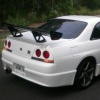R33 Rb30 Conversion
Announcements
-
Similar Content
-
Latest Posts
-
Unless things that you want to do include reference to time. Simple Boolean logic is only good for digital inputs or analogues that have been thresholded into digitals. But unless you also have a timer function available (which would more ideally be located inside the program, rather than being forced to implement a timer outside the ECU and bring it in as a seperate digital for every time delay you want to implement), then you can't do some of the things that you might want to do. My PLC ladder logics are obviously littered with program blocks, because that's easier than building it all in ladder gates, but the most frequent of those program blocks is a simple timer, because you actually can't otherwise do that in ladder at all.
-
Log voltage. I'm suspecting the alternator. Or even maybe a bad earth somewhere. ie, seeing as it is rev dependent, I am thinking it is alternator dependent.
-
Yeah so N1 and any other larger than factory pump are pretty famous for pumping the sump dry...obviously we don't often get to spend 20 or 30 seconds at high rpm/full noise on the road so I'd still be suspicious that is what is happening here.
-
You are also getting pressure dips on gear shifts. They're just not dipping as far, but they're dipping quite below the amount of oil pressure you should be seeing, for how much RPM drops. It quite little could be the oil pressure relief valve is starting to stick open a little/is slow to close.
-
Can you log battery voltage, and TPS, and put all four of those into a single image (even as split graphs)? The oil pressure drops aren't following RPM as such. I'm intrigued if you may have a ground loop between different sensors. With the engine not running, log your sensors and for example cycle the throttle pedal. See if any sensor values flutter or move about. This won't be a perfect test either as the ECU won't be cycling all of its actuators like it would be while running. What EMTRON do you have? Do you have a link to the wiring guide for that ECU?
-







Recommended Posts
Create an account or sign in to comment
You need to be a member in order to leave a comment
Create an account
Sign up for a new account in our community. It's easy!
Register a new accountSign in
Already have an account? Sign in here.
Sign In Now